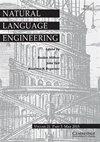基于特定语言特征的韩文命名实体识别
IF 1.9
3区 计算机科学
Q3 COMPUTER SCIENCE, ARTIFICIAL INTELLIGENCE
引用次数: 0
摘要
在本文中,我们提出了一种新的方法来改进韩国语中的命名实体识别(NER),利用其特定的语言特征。近年来,人们对命名实体领域进行了广泛的研究,但对韩国语中有效识别命名实体(NEs)的机制却鲜有研究。这是因为韩国语具有独特的语言特性,这给建模带来了挑战。因此,本文提出了一种采用CoNLL-U格式的韩语语料库标注方案,将韩语单词分解为语素,减少原始分词中可能包含后置词、助词等功能语素的网元歧义。我们研究了如何在基于语素的方案中最好地表示网元标签,并实现了一种算法,将基于词和音节的韩语语料库转换为基于语素的格式。对传统模型和神经模型的分析结果表明,基于语素的格式是可行的,并证明了模型在各种附加语言特定特征影响下的不同性能。在给定不同类型的数据(包括原始分割和不同类型的标记格式)时,还考虑了外在条件来观察所提出模型性能的差异。本文章由计算机程序翻译,如有差异,请以英文原文为准。
Korean named entity recognition based on language-specific features
Abstract In this paper, we propose a novel way of improving named entity recognition (NER) in the Korean language using its language-specific features. While the field of NER has been studied extensively in recent years, the mechanism of efficiently recognizing named entities (NEs) in Korean has hardly been explored. This is because the Korean language has distinct linguistic properties that present challenges for modeling. Therefore, an annotation scheme for Korean corpora by adopting the CoNLL-U format, which decomposes Korean words into morphemes and reduces the ambiguity of NEs in the original segmentation that may contain functional morphemes such as postpositions and particles, is proposed herein. We investigate how the NE tags are best represented in this morpheme-based scheme and implement an algorithm to convert word-based and syllable-based Korean corpora with NEs into the proposed morpheme-based format. Analyses of the results of traditional and neural models reveal that the proposed morpheme-based format is feasible, and the varied performances of the models under the influence of various additional language-specific features are demonstrated. Extrinsic conditions were also considered to observe the variance of the performances of the proposed models, given different types of data, including the original segmentation and different types of tagging formats.
求助全文
通过发布文献求助,成功后即可免费获取论文全文。
去求助
来源期刊

Natural Language Engineering
COMPUTER SCIENCE, ARTIFICIAL INTELLIGENCE-
CiteScore
5.90
自引率
12.00%
发文量
60
审稿时长
>12 weeks
期刊介绍:
Natural Language Engineering meets the needs of professionals and researchers working in all areas of computerised language processing, whether from the perspective of theoretical or descriptive linguistics, lexicology, computer science or engineering. Its aim is to bridge the gap between traditional computational linguistics research and the implementation of practical applications with potential real-world use. As well as publishing research articles on a broad range of topics - from text analysis, machine translation, information retrieval and speech analysis and generation to integrated systems and multi modal interfaces - it also publishes special issues on specific areas and technologies within these topics, an industry watch column and book reviews.
 求助内容:
求助内容: 应助结果提醒方式:
应助结果提醒方式:


